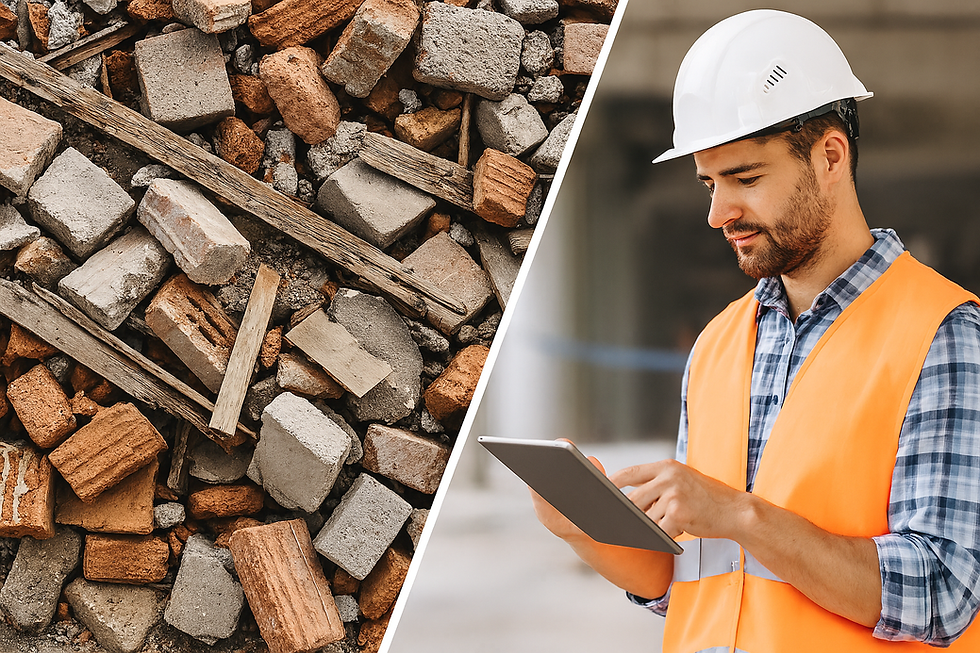Progress Invoicing in Construction Projects: From Excel Hassles to Cloud-Based Simplicity
- kinjal shah
- Sep 1
- 2 min read
In the construction industry, cash flow is the lifeblood of project execution. Contractors, billing engineers, and project managers rely on progress invoicing to ensure timely payments aligned with actual work completed. But while the concept is simple, the execution—especially when done in Excel—can be tedious, error-prone, and time-consuming.
Let’s break down how progress invoicing works, what an RA bill and abstract sheet are, and how modern tools like Sq-Feet are transforming this process.
🧾 What Is Progress Invoicing?
Progress invoicing (also known as progress billing) is a method where contractors bill clients incrementally based on the percentage of work completed. Instead of waiting until the end of a project, invoices are raised monthly or at defined milestones, ensuring steady cash flow and accountability.
This system is especially vital for long-duration projects like buildings, bridges, or infrastructure works, where expenses accumulate over time and payments need to be released in phases2.
📄 What Is an RA Bill?
An RA Bill, or Running Account Bill, is the formal document submitted by a contractor to the client or consultant to claim payment for work completed during a specific billing cycle—usually monthly.
Key features of an RA Bill:
Lists all items of work completed during the billing period
Includes previous quantities billed in earlier cycles
Shows current quantities executed
Calculates cumulative totals and payment due
Often includes supporting documents like measurements, photos, and reconciliation sheets
📊 What Is an Abstract Sheet?
The Abstract Sheet is a summary page attached to the RA Bill. It compiles all work items, showing:
Previous billed quantities
Current executed quantities
Cumulative totals
Rate per item
Amount payable
This sheet helps consultants and clients quickly verify the progress and approve payments. However, preparing it manually in Excel involves:
Linking multiple sheets
Cross-checking formulas
Managing revisions
Risking errors due to manual entries
🖥️ Why Excel Is Holding You Back
While Excel is familiar, it’s not built for construction billing. Common challenges include:
Broken formulas and links
Multiple versions and revisions
Difficulty in tracking estimated vs. billed quantities
Time-consuming reconciliation of materials and labor
Lack of real-time collaboration
🚀 Enter Sq-Feet: Cloud-Based Progress Invoicing Made Easy
Sq-Feet is a powerful, spreadsheet-style cloud platform designed specifically for construction professionals. It automates the entire progress billing cycle—from RA Bills to abstract sheets—without the clutter and complexity of Excel.
🔧 Key Features:
Auto-generate RA Bills and PC Certificates in real time
Track estimated vs. billed quantities with live dashboards
Generate material and labor reconciliation effortlessly
Centralized project database for team collaboration
Secure cloud access with regular backups and permission controls
Used in over 10,000+ projects across India
💡 Benefits:
Save time and eliminate manual errors
Improve payment cycles and reduce billing delays
Maintain historical records with one-click access
Empower teams with shared visibility and control
Future-proof your billing process with scalable, secure software
🏁 Final Thoughts
Progress invoicing is essential for maintaining financial health in construction projects. While Excel has served its purpose, it’s time to move toward smarter, faster, and more reliable tools. Platforms like Sq-Feet offer everything you need to streamline RA billing, abstract sheet generation, and cost control—without the spreadsheet headaches.
Ready to upgrade your billing workflow? Try Sq-Feet and experience the future of construction invoicing.




Comments